Features
First Ceylonese pilgrimage to Mecca by air
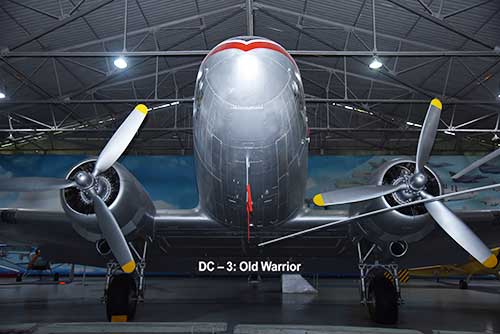
by Capt Elmo Jayawardena
Elmojay1@gmail.com
This is an ancient story; most records are lost, buried or moth-eaten. Still, there is a lot remaining in the minds of men who heard how things happened and what was commercial flying like in its infant days in Ceylon.
The aeroplane popularly known as ‘Dakota’ had been the workhorse of most allied forces during the Second World War. I do not know how many DC-3s were produced during the war years but they sure were somewhere around 16,000, or possibly even more. The aircraft came in various models whilst the prototype remained the fundamental ‘Dakota’ flying machine. After the war ended, most of the surplus DC-3s were converted into passenger-carrying aircraft. The new-born airlines popping up all over the world in ‘born again’ independent countries started their airline operations with secondhand military-used ‘Dakotas’.
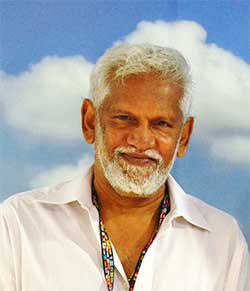 On the 10th of December 1947, Air Ceylon took off from the Ratmalana Airport on its maiden international commercial flight to Madras via Jaffna, operated with a DC-3, placing our little island on the world map of aviation.
On the 10th of December 1947, Air Ceylon took off from the Ratmalana Airport on its maiden international commercial flight to Madras via Jaffna, operated with a DC-3, placing our little island on the world map of aviation.
That was the beginning and then came the cautious expansion.
Those were the times, when the Haj and Umra pilgrims from Sri Lanka went to Mecca by travelling to Bombay and taking a flight from there. Some preferred the sea route from Colombo to Jeddah and then to Mecca by air or overland. As Air Ceylon tested its wings flying from Ratmalana to Jaffna and a few Indian airports, they began looking for new destinations. It was then that the Haj pilgrims negotiated with the National Carrier to charter a ‘Dakota’ to fly Muslim devotees from Ratmalana to Jeddah and back.
The commercial part of the matter was all-settled at the Airline head office and the task fell on the fledgling flight operations section to find a way to fly to Jeddah. The DC-3 was more than capable of the journey, of course, with multiple pit-stops for re-fueling and overnight stays. A fully loaded ‘Dakota’ weighing 26,200 Ib could carry 21 passengers. Its fuel capacity was 822 gallons and its two Pratt & Whitney Twin Wasp Radial engines drank 73 gallons per hour. The aeroplane had a ‘nil-wind’ range of approx. 1,500 nautical miles (nm) cruising at 6,000 ft. These were the performance data the flight crew had to work with, but there was a problem, a huge one at that. None of the Air Ceylon crew had flown those desert routes. Their exposure was limited to India, and to make it worse the Flight Operations office had no charts of the air-routes that could take them from Ratmalana to Jeddah! They were OK up to Bombay, but what lay beyond that was unknown or even a possible damnation.
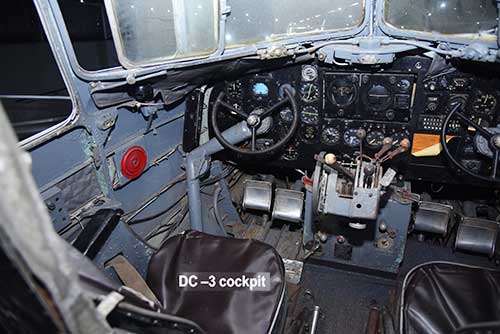
There was no way to go from Ratmalana to Jeddah as the crow flies. The crew had to consider the range capacity of their ‘Dakota’ and make their flight plan. The answer was at the Katunayaka RAF base. where they had all the necessary charts that covered the entire Middle Eastern sky. Post-war long-range operations were well-organised by the RAF, and they very generously shared all the information for route planning with details of radio beacons for navigation and radio frequencies for en-route communication.
Air Ceylon was now equipped to make their flight plan. They worked out the route from Ratmalana to Bombay (840 nm) and then to Karachi (471 nm), to Salalah (RAF base in Oman by the Arabian Sea – distance 871 nm), then to Aden (583 nm) and finally to Jeddah (627 nm).
Night stops were planned in Karachi and Aden with accommodation for crew and passengers. Everything was ready to fly to the unknown destinations through unknown territory and an unknown sky.
When I flew to Jeddah from BIA in the 80s it was on state-of-the-art Tri- Stars. We sat in the cockpit and punched into computers our route and destination Jeddah. We took off and engaged the autopilot and the automation did the rest and took us on the planned route to King Abdulaziz Airport in Jeddah. Even with all the sophisticated equipment we carried it was difficult to spot the runway when approaching the airfield. Everything was dusty, brown and hazy; it was either radar vectors or the instrument landing system that brought us to touch down. I often wonder what it would have been to fly a DC-3 to that same airport in 1950. The route they flew and how they found the airfields and countered the 40-degree heat in un-airconditioned cockpits would have been nothing less than the zenith of professional ‘seat of the pants’ flying. Perhaps it may have been the romance of it too, the true essence of flying which modern day pilots like me would hardly know.
They took off from Ratmalana with 21 Haj pilgrims bound for Jeddah. The flight crew comprised Capt Peter Fernando the Commander, Capt Emil Jayawardena the Co-Captain, Lionel Sirimanne the Radio Officer and G. V. Perera the Engineering Officer. Capt Peter was a veteran and the Flight Operations Manager of Air Ceylon. Capt Emil was an ex-RAF ‘Spitfire’ fighter pilot, who flew in the war; Mr Sirimanne and Mr Perera were experts in their allocated roles of communications and engineering. Off they flew, from Ratmalana, tracking to Bombay, where they stopped to refuel; everyone had lunch there. The next sector was to Karachi and as the sun went down in the Western sky, the ‘Dakota’ made its approach to land in Karachi’s Drigh Road Airport (currently known as Jinnah International). Now, it was night-stop time and the entourage moved to the BOAC crew hotel called ‘Speedbird’ located right next to the airport.
End of day one.
So far so good, they had flown 1,311 nm staying in the sky the whole day. Even though the first day’s route was quite familiar the navigation would have been very demanding as there were only a handful of non-directional beacons (NDBs) to tune to and use as nav-aids to make course corrections. The crew depended a lot on topographical maps and cautiously calculated aircraft positions by dead reckoning. This was real hard work by any standard.
The following morning, they departed Karachi and headed to Salalah Airport in Oman located by the Arabian Sea. This was an RAF base and the ‘Dakota’ was stopping there to refuel before flying on to Aden. Nearing Salalah they noticed the ground below completely covered with a thick stratiform-type cloud that stretched like a sheet as far as the eye could see. To make the situation worse, the Salalah Airport NDB was not working and the control tower too was silent. Radio Officer Sirimanne kept trying to raise Salalah and repeatedly failed. By dead reckoning the crew knew they were somewhere near Salalah Airport but with the beacon not working and without a visual sighting they simply could not descend through the cloud cover. Salalah aerodrome had considerable amount of high ground in the vicinity and the ‘Dakota’ descending through the cloud layer without a visual sighting could possibly plough into a hill killing everyone.
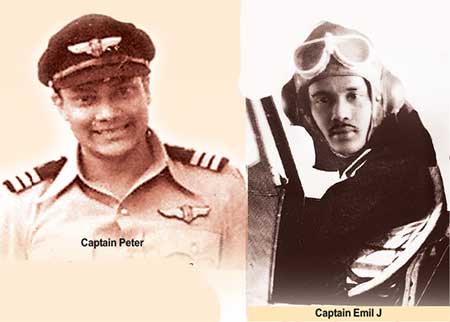
The crew had no fuel to go anywhere other than Salalah and they circled above the cloud layer for a while hoping to see a break in the clouds. They kept calling Salalah and re-tuning the beacon without any success. That, no doubt, was a tight situation. Truth be told, it was a very tight situation. The pilots played their last possible trump. Their plan was totally out of the box, yet sound and safe. They flew south/east from the place they were hovering, knowing they would now certainly be over the Arabian Sea. Then they slowly descended in cloud looking for the blue waters below. The plan was to get under the cloud base and fly above the water and make a 180 degree turn and fly towards land. They were experienced pilots who flew more with common sense and airmanship than fancy flight instruments. They were right. They broke cloud and saw the water and some boats, too. Now they were safe from the rugged terrain. Then they turned back, saw land below the cloud and headed to Salalah approaching from the seaside.
The radio crackled and the beacon came alive and Salalah tower was calling them. The ‘Dakota’ was safe and they flew towards the NDB at the airport and made a safe landing in Salalah. Many a pilot could have panicked in a situation like this. What the ‘Dakota’ crew did by flying out to sea to find a safe way to descend was a class act, and in my humble opinion deserves to be remembered and reminded to others as a hallmark of the type of gutsy people who flew aeroplanes in the bygone days.
The RAF base had not received the departure signal from Karachi that a DC-3 was flying to Salalah. The skeleton staff at the airport had shut down the aerodrome and gone for a sea bath. While they were frolicking in the water they heard an aircraft circling above the cloud layer and knew some pilot was desperately trying to land in Salalah. The RAF staff ran ashore and got into their vehicles and raced to the airport. That is how the radio came alive and the beacon started working. This was 1950, and such incidents did happen in aviation. The crew received a case of beer as a gift from the RAF boys and they took off, again after refueling, to Aden.
High frequency (HF) weather broadcasts were forecasting thunderstorms over Aden. The ‘Dakota’ had no radar unlike modern aeroplanes with colour screens to detect storm cells. The DC-3 pilots depended solely on their sight to carve a safe path weaving in and out of clouds to avoid weather. At night they went by the lightning flashes to stay away from thunderstorms. An old trick in flying DC-3 was to lower the landing gear if flying in bad weather. (I really can’t remember why, but we did it when flying ‘Dakotas’). The two pilots who were flying the Haj pilgrims were well-seasoned veterans who were a rare breed of aviators; they were so different from the people like me who flew modern jets. We can only imagine their feats and marvel on how they survived in unfriendly skies in their unsophisticated flying machines which hardly had any automation.
The ‘Dakota’ arrived in Aden safely and the crew and passengers did their second night stop after a weary, event-filled day flying the unknown skies. The following morning, they flew the last leg from Aden to Jeddah, flying over the Red Sea. It sure must have been a pleasant trip of 627 nm. The ‘Dakota’ crew brought their 21 passengers safely from Ratmalana to Jeddah flying a total of 3,392 nm. The pilgrims said their good-byes and disembarked to travel to Mecca overland.
The ‘DC-3 turned back and flew to Aden for another night stop. The return journey was in an empty aeroplane. That made it possible for the crew to fly direct to Karachi from Aden. The final night-stop was again at the Speedbird Hotel. The following day they flew to Ratmalana via Bombay after a pit-stop in Santa Cruz airport to re-fuel. A little more than a week later another Air Ceylon DC-3 flew from Ratmalana to Jeddah following the first flight’s flight-plan to bring back the Haj pilgrims home.
Those who know aeroplanes and the sky would cheer such aviators who blazed their way to the unknown in the magnificent ‘Dakotas’. To the non-aviators, I can only say this was flying at its optimum best, flown by men who knew what the flying game was all about.
I knew the entire crew that flew the ‘Dakota’ very well. Capt. Peter drove a yellow and black Riley and lived in Uyana, Moratuwa, next to St Joseph’s Church. Capt. Emil, the ex-RAF fighter pilot I knew from the day I was born to the day he said his final good-bye to this world. He was my father. Mr. G.V. Perera was a very senior aeronautical engineer, a wonderful man who even had a flying license. And the Radio Officer, Uncle Siri, he is only 101 years old and is active on ‘Facebook’. Lionel Sirimanne still mows his lawn in Kohuwela and drives his car to Keell’s supermarket. I am deeply grateful to him for some of the details he gave me about this flight to Jeddah. As for the old warrior, the ‘Dakota’, one of them is spruced up and kept in the Air Force Museum in Ratmalana. It is a worthy sight to see as it majestically rests its soul among airmen and aeroplanes and aviation lovers who come to see this historical aeroplane.
Features
Evolution of Paediatric Medicine in Sri Lanka: Honouring Professor Herbert Aponso on his 100th Birthday.
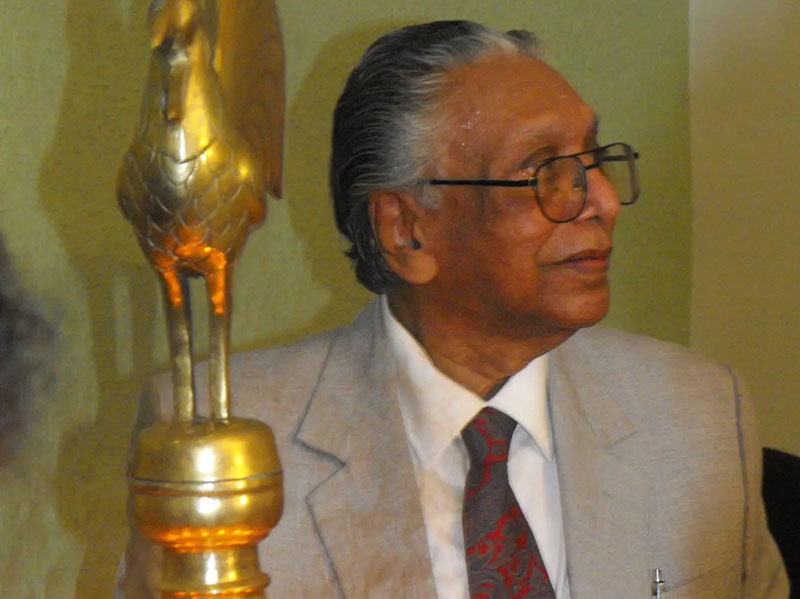
Professor Herbert Allan Aponso, born on March 25, 1925, recently celebrated his 100th birthday at his serene home in Kandy. Surrounded by his cherished children, the occasion not only honoured his extraordinary life but also served as a tribute from his academic colleagues, recognising his outstanding contributions to the field of paediatrics in Sri Lanka. Professor Aponso is widely recognised for his exceptional ability to combine extensive field experience with academic teaching and groundbreaking research. He emphasised social causes of disease and maintained that a disease is not just a manifestation of biological factors in the human body, but an expression of social and environmental factors as well. He encouraged his students to consider social aspects, such as family factors and poverty, in order to explain diseases, particularly childhood diseases such as malnutrition.
Born in Lakshapathiya, Moratuwa, Aponso began his academic journey at Prince of Wales College, Moratuwa, excelling in the Senior School Certificate and London Matriculation Examinations. His medical aspirations led him to the University of Colombo in 1943 and subsequently to the Medical College, where he graduated MBBS with honours in 1949. Pursuing further specialisation, he trained in paediatrics at the prestigious Great Ormond Street Hospital for Children, the largest and oldest children’s hospital in the UK, earning his DCH (London) in 1956 and MRCP (Edinburgh) in 1957.
Upon his return to Ceylon in 1958, Aponso earned his MD in Medicine and commenced a distinguished academic career. He joined the Faculty of Medicine in Colombo as a Senior Lecturer in 1963 and subsequently took on the role of Lecturer-in-Charge of Paediatrics at the University of Ceylon in Peradeniya in 1964. His career saw steady progression as he was promoted to Associate Professor in 1974 and ultimately attained the position of full Professor of Paediatrics in 1977.
Aponso was a Fellow of both the Royal College of Physicians (Edinburgh) and the Ceylon College of Physicians. He actively contributed to the Kandy Society of Medicine, where he served as President from 1974 to 1975. Beyond medicine, he played key roles in community organisations. Before relocating to Kandy, he was the president of the Moratuwa YMCA and a founding member of the Moratuwa Y’s Men Club. Later, he led the Kandy Y’s Men’s Club, which evolved into the Mahanuwara Y’s Men’s Club.
His contributions extended into promoting nutritional advancements, notably advocating for the consumption of soya. He pioneered the preparation of soya products in the kitchen of the Peradeniya Teaching Hospital and established a Soya Centre linked to the Kandy YMCA. Further showcasing his dedication to public health, he presided over the Sri Lanka Association for Voluntary Surgical Contraception and Family Health during two separate periods: 1977–1979 and 1986–1987. Additionally, he led the Sri Lanka Paediatric Association from 1976–1977.
Even after retiring from the University of Peradeniya in 1993, his impact endured. In recognition of his lifelong contributions, the university awarded him an honorary DSc in 2022. Through his tireless dedication, Professor Aponso profoundly influenced paediatric medicine in Sri Lanka, leaving an enduring legacy in both academic and medical spheres. Paediatrics as a specialised field of medicine in Sri Lanka has evolved over centuries, shaped by indigenous healing traditions, colonial medical advancements, and modern institutional developments. During colonial times under the Portuguese and Dutch, children continued to be treated through traditional medicine. The British colonial administration formalised Western medical education and established hospitals. In 1870, the Ceylon Medical College (now the Faculty of Medicine, University of Colombo) was founded, producing doctors trained in Western medicine. Paediatric care as a distinct discipline began to emerge in the early 20th century, having previously been part of general medicine. The introduction of vaccination programmes, particularly against smallpox, was a major public health advance introduced under the Vaccination Ordinance of 1886. It was during the1920s that Maternal and Child Health Clinics were setup in villages, laying the foundations for addressing child health issues in the country.
The early decades of the century saw the establishment of paediatric units in major hospitals, a critical step towards recognising and addressing the distinct medical needs of children. The establishment of paediatric units in major hospitals in Sri Lanka began in the mid-20th century, with significant developments occurring in the 1950s and 1960s. These units were set up to provide specialised care for children, addressing their unique medical needs. For example, the Lady Ridgeway Hospital for Children in Colombo became a national tertiary care centre, offering advanced paediatric services Hospitals such as the Colombo General Hospital (now the National Hospital of Sri Lanka) and played a pioneering role in creating specialised wards dedicated to paediatric care, laying the foundations for future advancements in the field.
A major turning point in the progress of paediatrics in Sri Lanka came with the appointment of Dr. C. C. de Silva as the first Professor of Paediatrics at the University of Ceylon (now the University of Colombo) in the 1950s. He was instrumental in formalising paediatric education and training, ensuring that future medical professionals were equipped with the knowledge and skills to provide specialised care for children. The introduction of dedicated paediatric courses in medical schools marked a shift from traditional general practice to a more specialised approach to child healthcare. The 1950s also saw the expansion of paediatric services beyond Colombo, with provincial hospitals establishing their own paediatric units, making specialised care accessible to a wider population.
The latter half of the 20th century witnessed remarkable progress in paediatric care, with the establishment of postgraduate training programmes aimed at producing highly qualified paediatricians. These programmes were designed to meet the increasing demand for specialised medical professionals who could address the complex healthcare needs of children. Alongside these educational advancements, there was a significant improvement in neonatal and maternal healthcare services, leading to better survival rates for newborns and reducing infant mortality. Innovations in paediatric research and healthcare policies further contributed to improvements in the overall well-being of children in Sri Lanka.
By the 1980s, paediatrics had firmly established itself as a distinct and essential medical discipline in Sri Lanka. The introduction of specialised paediatric subfields such as neonatology, cardiology, and nephrology allowed for more targeted treatment and improved health outcomes for children with complex medical conditions. The role of paediatricians expanded beyond hospital care, with increased involvement in public health initiatives such as immunisation programmes and nutritional interventions. The collaborative efforts of the government, medical institutions, and healthcare professionals ensured that paediatric care in Sri Lanka continued to progress in parallel with global medical advancements.
The development of paediatric specialization in Sri Lanka during the 20th century was a transformative journey that laid the groundwork for the country’s modern child healthcare system. From its humble beginnings in general hospital wards to the establishment of specialised training programmes and research initiatives, paediatrics evolved into a well-defined and essential medical discipline. This progress not only improved healthcare outcomes for children but also contributed to the overall strengthening of the medical field in Sri Lanka. Today, paediatrics continues to be a vital component of the healthcare system, building upon the foundations set during the 20th century to ensure a healthier future for the nation’s children. Professor Aponso was integral to the shaping of this process of development, in the 1950s and afterwards, fully engaged in every aspect. His involvement was not just academic, as he was an advisor to the government and other organisations, such as the World Health Organization, on matters about advancements in child health.
One of his most significant accomplishments was a six-year research project, generously funded by the World Health Organization (WHO) and the Canadian International Development Agency (CIDA). This initiative was integral to addressing pressing health challenges within the Mahaweli Accelerated Development Programme in its initial phase. The project focused particularly on improving healthcare services in System ‘C’ of Girandurukotte, a region populated by settlers relocated from villages inundated due to the construction of large tanks and reservoirs. The programme was launched shortly after the settlers arrived, aiming to tackle the myriad health issues they encountered as newcomers to the dry zone settlements.
Under Aponso’s leadership, ‘mothers’ clubs’ were established in hamlets in each of the four settlement units chosen for intervention. These clubs became vital community spaces where families could engage in discussions about the health problems they faced. The challenges were numerous and varied, including skin diseases, issues with drinking water, snake bites, elephant attacks, and accidents sustained while working in newly cleared paddy lands. Malaria and flu posed an especially serious threat at the time, necessitating timely treatment.
The mothers’ clubs operated as dynamic forums where settlers could participate in question-and-answer sessions about their health concerns. These sessions often culminated in providing treatments for those afflicted. The efforts were supported by Dr. (Mrs.) Fernando, a dedicated health officer in ‘System C’ of Girandurukotte, who attended most of the meetings, ensuring professional medical assistance. Professor Aponso was also assisted by lecturers at the Department of Paediatrics and a health education officer, Mrs. Alagoda, whose skills in engaging with mothers played a pivotal role in the success of the discussions and outreach programmes.
During this period, the Centre for Intersectoral Community Health Studies (CICHS) emerged under the visionary leadership of Professor Aponso. As an interdisciplinary scholarly organisation dedicated to advancing health research in Sri Lanka, CICHS made remarkable strides in the field. Among its pioneering initiatives, the sexual-risk prevention programme stood out as a milestone. This programme prioritised fostering individual competencies while shaping cultural norms that encourage healthy sexual decision-making, reflecting the organisation’s commitment to impactful research and community well-being.
As the project manager of the WHO/CIDA project, I had the privilege of working closely with Professor Aponso. I travelled frequently from my office at the Department of Paediatrics at Peradeniya to the villages, coordinating the programme’s activities. We collected household data on a sample within selected settlement units, such as Teldeniyaya, Hombariyawa, Millaththewa and Rambewa. To make a comparison, we also collected data from Mawanella rural villages, which was considered the control area. This information was then meticulously analysed using an IBM computer, a remarkable technological feat at a time when computers were a rarity.
Our research team, comprising approximately ten recent sociology graduates, including KMHB Kulasekera, RM Karunasekara and Nandani de Silva, worked tirelessly to collect, compile and interpret the data. The findings were shared at various conferences in the form of scholarly articles, providing valuable contributions to both national and global conversations on the public health challenges faced by communities in transition.
Professor Aponso’s work not only made a profound impact on the lives of those settlers but also left an indelible mark on the field of social paediatrics, demonstrating the transformative power of community-based health initiatives supported by collaborative research.
Aponso’s contributions to child healthcare, particularly in the areas of neonatology, nutrition, and medical education are important. As a student of Dr. C. C. de Silva, he was deeply influenced by his mentor’s pioneering work in paediatrics and carried forward his legacy by further strengthening child healthcare services in Sri Lanka. Dr. L.O. Abeyratne was the first Professor of Paediatrics at Peradeniya, and, upon his retirement, Professor Aponso succeeded him, continuing to advance paediatric education and healthcare in Sri Lanka. Aponso was particularly known for his work in neonatal care and the prevention of childhood malnutrition. He played a key role in introducing and promoting best practice in newborn care, helping to reduce infant mortality rates in Sri Lanka. His advocacy for improved maternal and child health policies contributed to the expansion of paediatric services beyond Colombo, ensuring that specialized care was accessible to children in rural areas as well.
Beyond clinical practice, Professor Aponso was a dedicated medical educator. He trained and mentored numerous paediatricians, helping to shape the next generation of child healthcare professionals in Sri Lanka. His work in medical research and teaching influenced advancements in paediatric care and was
instrumental in establishing higher standards in paediatric training programmes. In 2011, in commemoration of his work, Dr. Ananda Jayasinghe edited a collection of essays titled ‘In honour of Herbert Allan Aponso, emeritus professor of paediatrics, University of Peradeniya, Sri Lanka.’
Professor Aponso is a remarkable individual whose humility is as profound as his ability to listen with intention and honour to the perspectives of those around him. A celebrated expert in his field, he was elected President of the Sri Lanka Paediatric Association in 1976 and ascended to the role of full Professor of Paediatrics in 1977. His dedication extended far beyond academia—he served as President of the Young Men’s Christian Association in Kandy during three pivotal periods: 1966–1968, 1973–1975, and 1984–1988.
In 1952, he embarked on a lifelong partnership with Jayanthi Vimala Dias, now deceased, building not just a family but a legacy of intellect and social impact. Together, they raised three children—Ajith, Heshan, and Charmalie—who each distinguished themselves in society. Their home became a vibrant epicentre of stimulating dialogue and collaborative ideas, welcoming friends to partake in lively, thought-provoking discussions.
For me, the memory of Professor Aponso is forever intertwined with the dynamic days of the Mahaweli research project and CICHS initiatives, where his presence enriched every endeavour. As he continues his retirement journey, I wish him abundant health and days brimming with vitality, joy, and a renewed sense of purpose.
by M. W. Amarasiri de Silva
(Emeritus Professor of Sociology, University of Peradeniya Sri Lanka and Lecturer at the University of California, Santa Cruz, USA).
Features
Indian colonialism in Sri Lanka

Following independence from Britain, both India and Sri Lanka emerged as leaders of the Non-Aligned Movement, which sought to advance developing nations’ interests during the Cold War. Indeed, the term “non-alignment” was itself coined by Indian Prime Minister Jawaharlal Nehru during his 1954 speech in Colombo. The five principles of the Non-Aligned Movement are: “mutual respect for each other’s territorial integrity and sovereignty; mutual non-aggression; mutual non-interference in domestic affairs; equality and mutual benefit; and peaceful co-existence.”
Later, Indian Prime Minister Indira Gandhi played a key role in supporting Sri Lankan Prime Minister Sirimavo Bandaranaike’s 1971 proposal to declare the Indian Ocean a Zone of Peace at the United Nations.
Such progressive ideals are in stark contrast to the current neocolonial negotiations between the two countries.
Indian Prime Minister Narendra Modi’s forthcoming visit to Sri Lanka on April 4, 2025, is presented as representing a mutually beneficial partnership that will bring economic development to debt-burdened Sri Lanka. However, the details of the strategic agreements to be signed during Modi’s visit remain undisclosed to the public. This opacity cannot be a good sign and should not be accepted uncritically by the media or the people of either nation.
The Indo-Lanka Agreement of July 29, 1987, was also crafted without consultation with the Sri Lankan people or its parliament. It was signed during a 48-hour curfew when former Indian Prime Minister Rajiv Gandhi arrived in Sri Lanka. This agreement led to the imposition of the 13th Amendment to the Sri Lankan Constitution and established the Provincial Council system. The political framework it created continues to challenge Sri Lanka’s territorial integrity and sovereignty. Rather than bringing peace, India’s 1987 intervention resulted in one of the most violent and chaotic periods in the island’s recent history.
Will these agreements being finalised with Prime Minister Modi also lead to a period of pillage and plunder of the island’s resources and worsening conditions for its people, rather than delivering the promised economic benefits? It is crucial that any bilateral agreements include enforceable measures to stop Indian bottom trawlers from illegally fishing in Sri Lankan territorial waters. This decades-long practice has caused severe damage to Sri Lanka’s marine resources and inflicted significant economic losses on its fishing communities.
Facing an increasing Chinese presence in Sri Lanka and the Indian Ocean, India has sought to strengthen its political, economic, strategic and cultural influence over Sri Lanka through various overt and covert means. During Sri Lanka’s 2022 economic crisis, for example, India provided $4 billion in financial assistance through currency swaps, credit lines, and loan deferrals that enabled Sri Lanka to import essential goods from India. While this aid has helped Sri Lanka, it has also served India’s interests by countering China’s influence and protecting Indian business in Sri Lanka.
Prime Minister Modi’s upcoming visit represents the culmination of years of Indian initiatives in Sri Lanka spanning maritime security, aviation, energy, power generation, trade, finance, and cultural exchanges. For example, India’s Unified Payment Interface (UPI) for digital payments was introduced in Sri Lanka in February 2024, and in October 2023 India provided funds to develop a digital national identity card for Sri Lanka raising concerns about India’s access to Sri Lanka’s national biometric identification data. Indian investors have been given preferential access in the privatisation of Sri Lanka’s state-owned enterprises (SOEs) in key sectors like telecommunications, financial services, and energy. Adani Group’s West Terminal project in Colombo Port is explicitly designed to counter China’s control over Sri Lanka’s port infrastructure, including the Colombo International Container Terminal, Hambantota Port, and Port City Colombo.
India and Sri Lanka have recently agreed to resume negotiations on the Economic and Technology Cooperation Agreement (ETCA), which focuses primarily on the service sector and aims to create a unified labour market. However, Sri Lankan professional associations have raised concerns that ETCA could give unemployed and lower-paid Indian workers a competitive advantage over their Sri Lankan counterparts. These concerns must be properly addressed before any agreement is finalised.
On December 16, 2024, India and Sri Lanka signed several Memoranda of Understanding (MOUs) in New Delhi to enhance cooperation in defense, energy, and infrastructure development. These include plans for electricity grid interconnection and a multi-product petroleum pipeline between the two countries. Building on these agreements, construction of the Sampur power plant in Trincomalee is expected to begin during Prime Minister Modi’s April visit.
The Sampur power plant project, combined with India’s takeover of the Trincomalee Oil Tank Farm, represents a significant step toward integrating Sri Lanka into India’s national energy grid. This development effectively brings Trincomalee’s strategic natural harbour – often called the “crown jewel” of Sri Lanka’s assets – under Indian control, transforming it into a regional energy hub. In 1987, during India’s military intervention in Sri Lanka, New Delhi pressured Colombo into signing a secret agreement stipulating that the British-era Trincomalee oil tank farm would be jointly developed with India and could not be used by any other country.
While India promotes its energy interconnection projects as enhancing regional energy security, recent experiences in Nepal demonstrate how electricity grid integration with India has made Nepal dependent on and subordinate to India for its basic energy needs. Similarly, Bangladesh’s electricity agreement with the Adani Group has created an imbalanced situation favouring Adani over Bangladeshi power consumers. What collective actions could Sri Lanka and other small nations take to avoid such unequal “energy colonialism” and protect their national security and sovereignty?
India’s emergence as a superpower and its expansionist policies are gradually transforming neighbouring South Asian and Indian Ocean states into economically and politically subordinate entities. Both Sri Lanka and the Maldives have adopted “India First” foreign policies in recent years, with the Maldives abandoning its “India Out” campaign in October 2024 in exchange for Indian economic assistance.
India’s “Neighbourhood First Policy” has led to deep involvement in the internal affairs of neighbouring countries including Sri Lanka. This involvement often takes the form of manipulating political parties, exploiting ethnic and religious divisions, and engineering political instability and regime changes – tactics reminiscent of colonial practices. It is well documented that India provided training to the LTTE and other terrorist groups opposing the Sri Lankan government during the civil war.
Contemporary Indian expansionism must be viewed within the broader context of the New Cold War and intensifying geopolitical competition between the United States and China. Given its strategic location along the vital east-west shipping routes in the Indian Ocean, Sri Lanka has become a pawn in this great power rivalry. In addition to granting China extensive control over key infrastructure, Sri Lanka has signed the Acquisition and Cross-Servicing Agreement (ACSA) and Status of Forces Agreement (SOFA) with the United States, effectively allowing the use of Sri Lanka as a U.S. military logistics hub. It was reported that during a visit to Sri Lanka in February 2023, Victoria Nuland, former Under Secretary of State for Political Affairs of the United States strongly suggested the establishment of a joint US-Indian military base in Trincomalee to counter Chinese activities in the region.
As a member of the Quadrilateral Security Dialogue (QUAD) – a strategic alliance against Chinese expansion that includes the United States, Australia and Japan – India participates in extensive QUAD military exercises like the Malabar exercises in the Indian Ocean. However, India’s role in QUAD appears inconsistent with its position as a founding member of BRICS (Brazil, Russia, India, China, South Africa), which was established to promote the interests of emerging economies and a multipolar world order. Unfortunately, BRICS appears to be replicating the same patterns of domination and subordination in its relations with smaller nations like Sri Lanka that characterise traditional imperial powers.
India presents itself as the guardian of Buddhism, particularly in its relations with Sri Lanka, to foster a sense of shared cultural heritage. However, it was Sri Lanka – not India – that preserved the Buddha’s teachings as they declined and eventually disappeared from India. Sri Lanka maintained the Buddhist tradition despite seventeen major invasions from India aimed at destroying the island’s Buddhist civilization.
Even today, despite its extensive influence, India has not taken meaningful steps to protect Buddhist temples and archaeological sites in Sri Lanka’s north and east from attacks by Tamil separatist groups. Instead, India appears focused on advancing the concept of Akhand Bharat (Undivided India) and Hindu Rashtra (Hindu Nation), which seeks to incorporate neighboring countries like Sri Lanka into a “Greater India.” The promotion of the bogus Ramayana Trail in Sri Lanka and the accompanying Hinduization pose a serious threat to preserving Sri Lanka’s distinct Buddhist identity and heritage.
Indian neocolonialism in Sri Lanka reflects a global phenomenon where powerful nations and their local collaborators – including political, economic, academic, media and NGO elites – prioritize short-term profits and self-interest over national and collective welfare, leading to environmental destruction and cultural erosion. Breaking free from this exploitative world order requires fundamentally reimagining global economic and social systems to uphold harmony and equality.
In this global transformation, India has a significant role to play. As a nation that endured centuries of Western imperial domination, India’s historical mission should be to continue to lead the struggle for decolonization and non-alignment, rather than serving as a junior partner in superpower rivalries. Under Mahatma Gandhi’s leadership, India championed the worldwide movement for decolonization and independence in the modern era.
Upholding the principles of the Non-Aligned Movement could forge a partnership benefiting both nations while preserving Sri Lanka’s independence and Buddhist identity. Otherwise, the New Cold War will continue to trample local sovereignty, where foreign powers vie to exploit the island’s resources, subjugate local communities and accelerate environmental and cultural destruction.
by Dr. Asoka Bandarage
Features
Batalanda Skeletons, Victims’ Sorrows and NPP’s Tasks
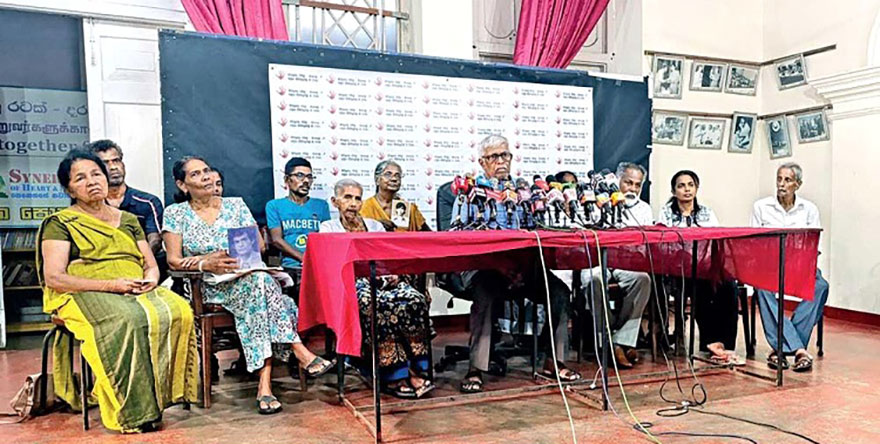
Few foresaw skeletons of Batalanda come crashing down in a London television interview. There have been plenty of speculations about the intended purposes and commentaries on the unintended outcomes of Ranil Wickremesinghe’s Al Jazeera interview. The more prurient takes on the interview have been about the public dressing down of the former president by the pugnacious interviewer Mehdi Hasan. Only one person seems convinced that Mr. Wickremesinghe had the better of the exchanges. That person is Ranil Wickremesinghe himself. That is also because he listens only to himself, and he keeps himself surrounded by sidekicks who only listen and serve. But there is more to the outcome of the interview than the ignominy that befell Ranil Wickremesinghe.
Political commentaries have alluded to hidden hands and agendas apparently looking to reset the allegations of war crimes and human rights violations so as to engage the new NPP government in ways that would differentiate it from its predecessors and facilitate a more positive and conclusive government response than there has been so far. Between the ‘end of the war’ in 2009, and the election of President Anura Kumara Dissanayake and the NPP government in 2024, there have been four presidents – Mahinda Rajapaksa, Maithripala Sirisena, Gotabaya Rajapaksa and Ranil Wickremesinghe – and as many governments. Of the four, Ranil Wickremesinghe is the least associated with the final stages of the war and its ending. In fact, he was most associated with a failed, even flawed peace process that ultimately ensured the resumption of the war with vengeance on both sides. RW was also the most receptive to war crimes investigations even proffering that external oversight would not be a violation of Sri Lanka’s Constitution.
One school of thought about the Al Jazeera interview is that those who arranged it were hoping for Ranil Wickremesinghe to reboot the now stalling war crimes project and bring pressure on the NPP government to show renewed commitment to it. From the looks of it, the arrangers gave no thought to Ranil Wickremesinghe’s twin vulnerabilities – on the old Batalanda skeletons and the more recent Easter Sunday bombings. If Easter Sunday was a case of criminal negligence, Batalanda is the site of criminal culpability. In the end, rather than rebooting the Geneva project, the interview resurrected the Batalanda crimes and its memories.
The aftermath commentaries have ranged between warning the NPP government that revisiting Batalanda might implicate the government for the JVP’s acts of violence at that time, on the one hand, and the futility of trying to hold anyone from the then government accountable for the torture atrocities that went on in Batalanda, including Ranil Wickremesinghe. What is missing and overlooked in all this is the cry of the victims of Batalanda and their surviving families who have been carrying the burden of their memories for 37 years, and carrying as well, for the last 25 years, the unfulfilled promises of the Commission that inquired into and reported on Batalanda.
The families impacted by Batalanda gave a moving illustration of the agony they have been going through for all these years in a recent media briefing, in Colombo, organized by the indefatigable human rights activist Brito Fernando. I am going by the extensive feature coverage of the media event and the background to Batalanda written by Kamanthi Wickremesinghe in the Daily Mirror (March 20, 2025). I am also borrowing her graphics for illustration – a photograph of the media briefing and a map of Sri Lanka showing the scattered sites of mass graves – 20 in all.
“We express gratitude to this government for providing the environment to discuss and debate about the contents of this report,” said Brito Fernando, speaking for the families. After addressing Ranil Wickremesinghe’s obfuscations about his involvement, and decrying Chandrika Kumaratunga’s failure to act on the recommendations of the report of the Batalanda Commission of Inquiry she created, Mr. Fernando appealed to the present NPP government to “provide a secure environment where these victims could come out and speak about their experiences,” Nothing more, nothing less, and that is all there is to it.
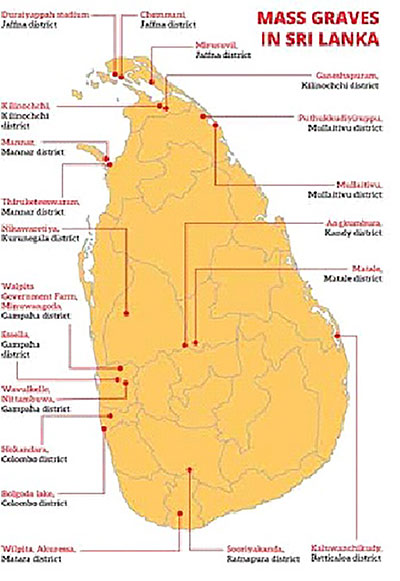 Whatever anyone else might say, the victims of Batalanda and their survivors have vindicated the NPP government’s decision to formally table the Batalanda Commission Report in parliament. As for their continuing expectations, Brito Fernando went on say, “We have some hopes regarding this government, but they should walk the talk.” Mr. Fernando suggested that the government should co-ordinate with the UNHRC’s Sri Lanka Accountability Project that has become a valuable resource for preserving evidence and documentation involving human rights crimes and violations over many decades. In addition, Mr. Fernando pointed out that the grieving families have not been involved in the ongoing excavations of mass graves, and they are anxious to receive the remains of their dear ones after their identity is confirmed through DNA analyses. Nor has there been any sign of legal action being taken against any of the suspects connected to the mass graves.
Whatever anyone else might say, the victims of Batalanda and their survivors have vindicated the NPP government’s decision to formally table the Batalanda Commission Report in parliament. As for their continuing expectations, Brito Fernando went on say, “We have some hopes regarding this government, but they should walk the talk.” Mr. Fernando suggested that the government should co-ordinate with the UNHRC’s Sri Lanka Accountability Project that has become a valuable resource for preserving evidence and documentation involving human rights crimes and violations over many decades. In addition, Mr. Fernando pointed out that the grieving families have not been involved in the ongoing excavations of mass graves, and they are anxious to receive the remains of their dear ones after their identity is confirmed through DNA analyses. Nor has there been any sign of legal action being taken against any of the suspects connected to the mass graves.
The map included here shows twenty identified mass graves spread among six of the country’s nine provinces. There could be more of them. They are a constant reminder of the ravages that the country suffered through over five decades. They are also a permanent source of pain to those whose missing family members became involuntary tenants in one or another mass grave. The families and communities around these mass graves deserve the same opportunity that the impacted families of Batalanda have been given by the current exposure of the Batalanda Commission Report.
The primary purpose of dealing with past atrocities and the mass graves that hold their victims is to give redress to survivors of victims, tend to their long lasting scars and reengage them as free and full members of the community. Excavation and Recovery, DNA Analysis and Community Engagement have become the three pillars of the recuperation process. Sri Lanka is among nearly a hundred countries that are haunted by mass graves. Many of them have far greater numbers of mass graves assembled over even longer periods. Suffering and memories are not quantitative; but unquantifiable and ineluctable emotions. The UN counts three buried victims as a mass grave. Even a single mass grave is one too many.
To do nothing about them is a moral and social copout at every level of society and in the organization of its state. Normalising the presence of mass graves is never an option for those who live around them and have their family members buried in them. Not for them who have built up over centuries, emotional systems of rituals for parting with their beloved ones. And it should not be so for governments that would otherwise go digging anywhere and everywhere in pseudo-archaeological pursuits.
Mass graves are created because of government actions and actions against governments. But governments come and go, and people in governments and political organizations change from time to time. There is a new government in town with a new generation of members in the Sri Lankan parliament, and it is time that this government revisited the country’s past and started providing even some redress to those who have suffered the most. The families of the Batalanda victims have vindicated the NPP government’s action to officially publicise the Batalanda Commission Report. The government must move on in that direction ignoring the carping of critics who selectively remember only the old JVP’s past.
There is more to what the government can do beyond mass graves. The Batalanda Commission Report is one of reportedly 36 such reports and each Commission has provided its fact findings and recommendations. Hardly any of them have been acted upon – not by the governments that appointed them and not by the governments that came after and created their own commissions. The JVP government must seriously consider creating a one last Commission, a Summary Commission, so to speak, to pull together all the findings and recommendations of previous commissions and identify steps and measures that could be integrated into ongoing initiatives and programs of the government.
The cynical alternative is to throw up one’s hands and do nothing, similar to cynically leaving the mass graves alone and doing nothing about them. The more sinister alternative was what Gotabaya Rajapaksa attempted when he appointed a new Commission of Inquiry to “assess the findings and recommendations” of previous commissions. That attempt was roundly condemned as a witch hunt against political opponents set up under the 1978 Commissions of Inquiry Act that was specifically enacted to enable the targeting political opponents under the guise of an inquiry. Repealing that act should be another consideration for the NPP government.
I am just floating the idea of a Summary Commission as a potential framework to bring positive closure to all the war crimes, emblematic crimes and human rights violations that have been plaguing Sri Lanka for the entire first quarter of this century. It is a political idea befitting the promises of a still new government, and one that would also be a positive fit for the government’s much touted Clean Sri Lanka initiative. For sure, it would be moral cleansing along with physical cleansing. A Summary Commission could also provide a productive forum for addressing the pathetic dysfunctions of the whole law and order system. The NPP government inherited a wholly broken down law and order system from its predecessors, but its critics suddenly see a national security crisis and it is all this government’s fault.
More substantively, a Summary Commission could tap into the resources of the UNHRC in collegial and collaborative ways without the hectoring and adversarial baggage of the past. These must be trying times for the UNHRC, as indeed for all UN agencies, given the full flight of Trumpism in America and its global spill over. Sri Lanka is one of a handful of countries where UNHRC professionals might find some headway for their mission. And the NPP government could be a far more reliable partner than any of its predecessors.
by Rajan Philips
-
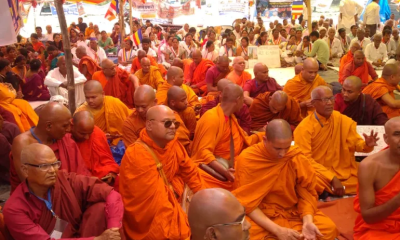
 Foreign News7 days ago
Foreign News7 days agoBuddhism’s holiest site erupts in protests over Hindu ‘control’ of shrine
-

 Features5 days ago
Features5 days agoCelebrating 25 Years of Excellence: The Silver Jubilee of SLIIT – PART I
-

 Sports1 day ago
Sports1 day agoSri Lanka’s eternal search for the elusive all-rounder
-

 Business3 days ago
Business3 days agoAIA Higher Education Scholarships Programme celebrating 30-year journey
-

 Business5 days ago
Business5 days agoCEB calls for proposals to develop two 50MW wind farm facilities in Mullikulam
-

 News2 days ago
News2 days agoGnanasara Thera urged to reveal masterminds behind Easter Sunday terror attacks
-

 Features5 days ago
Features5 days agoNotes from AKD’s Textbook
-

 News1 day ago
News1 day agoComBank crowned Global Finance Best SME Bank in Sri Lanka for 3rd successive year











